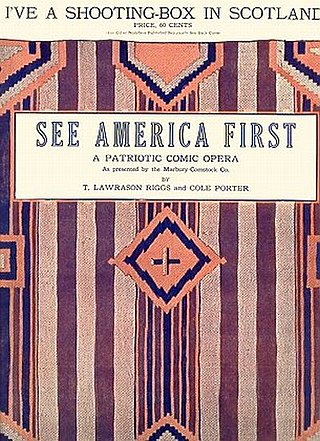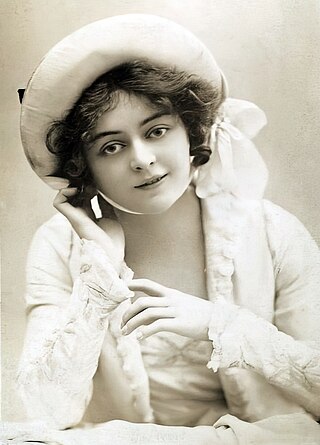
Musical theatre is a form of theatrical performance that combines songs, spoken dialogue, acting and dance. The story and emotional content of a musical – humor, pathos, love, anger – are communicated through words, music, movement and technical aspects of the entertainment as an integrated whole. Although musical theatre overlaps with other theatrical forms like opera and dance, it may be distinguished by the equal importance given to the music as compared with the dialogue, movement and other elements. Since the early 20th century, musical theatre stage works have generally been called, simply, musicals.

Aladdin is a Middle-Eastern folk tale. It is one of the best-known tales associated with The Book of One Thousand and One Nights, despite not being part of the original text; it was added by the Frenchman Antoine Galland, based on a folk tale that he heard from the Syrian Maronite storyteller Hanna Diyab.
Lost in the Stars is a musical with book and lyrics by Maxwell Anderson and music by Kurt Weill, based on the novel Cry, the Beloved Country (1948) by Alan Paton. The musical premiered on Broadway in 1949; it was the composer's last work for the stage before he died the following year.

Gay Divorce is a musical with music and lyrics by Cole Porter and book by Dwight Taylor, adapted by Kenneth Webb and Samuel Hoffenstein. It was Fred Astaire's last Broadway show and featured the hit song "Night and Day" in which Astaire danced with co-star Claire Luce.

Disney Theatrical Productions Limited (DTP), also known as Disney on Broadway, is the stageplay and musical production company of the Disney Theatrical Group, a subsidiary of Disney Entertainment, a major division and business unit of The Walt Disney Company.
Aladdin is a folk tale of Middle Eastern origin.

Félix Marie Henri Tilkin, better known by his pen name Ivan Caryll, was a Belgian-born composer of operettas and Edwardian musical comedies in the English language, who made his career in London and later New York. He composed some forty musical comedies and operettas.

The Wizard of Oz was a 1902 musical extravaganza based on the 1900 novel The Wonderful Wizard of Oz by L. Frank Baum. Although Baum is the credited bookwriter, Glen MacDonough was hired on as jokewriter after Baum had finished the script, and the book was largely ghostwritten by a man named Finnegan. Much of the original music was by Paul Tietjens and has been mostly lost, although it was still well-remembered and in discussion at MGM in 1939 when the classic film version of the story was made. The show's history is covered in more than 100 pages of the book Oz Before the Rainbow: L Frank Baum's 'The Wonderful Wizard of Oz' on stage and screen to 1939 by Mark Evan Swartz.

The Lyric Theatre was a Broadway theatre built in 1903 in the Theater District of Manhattan in New York City. It had two formal entrances: at 213 West 42nd Street and 214-26 West 43rd Street. In 1934, it was converted into a movie theatre which it remained until closing in 1992. In 1996, its interior was demolished and the space was combined with that of the former Apollo Theatre to create the Ford Center, now the new Lyric Theatre. Both the 42nd and 43rd Street facades of the original Lyric were preserved and today form the front and back entrances of the modern Lyric Theatre.
Henry Martyn Blossom Jr. was an American writer, playwright, novelist, opera librettist, and lyricist. He first gained wide attention for his second novel, Checkers: A Hard Luck Story (1896), which was successfully adapted by Blossom into a 1903 Broadway play, Checkers. It was Blossom's first stage work and his first critical success in the theatre. The play in turn was adapted by others creatives into two silent films, one in 1913 and the other in 1919, and the play was the basis for the 1920 Broadway musical Honey Girl. Checkers was soon followed by Blossom's first critical success as a lyricist, the comic opera The Yankee Consul (1903), on which he collaborated with fellow Saint Louis resident and composer Alfred G. Robyn. This work was also adapted into a silent film in 1921. He later collaborated with Robyn again; writing the book and lyrics for their 1912 musical All for the Ladies.

Thomas Baker was an English composer, music arranger, conductor, violinist, and musical producer who was primarily active in New York City. He is best known for composing the music for The Black Crook; a work which is widely cited as the first precursor to the twentieth-century musical.

See America First is a comic opera with a book by T. Lawrason Riggs and music and lyrics by Cole Porter. The first work by Porter to be produced on Broadway, it was a critical and commercial flop.

Glen MacDonough was an American writer, lyricist and librettist. He was the son of theater manager Thomas B. MacDonough and actress/author Laura Don. Glen MacDonough married Margaret Jefferson in 1896 in Buzzard's Bay, Massachusetts.

Aladdin is a stage musical based on Disney's 1992 animated feature film of the same name with a book by Chad Beguelin, music by Alan Menken and lyrics by Howard Ashman, Tim Rice and Beguelin. It resurrects three songs written by Menken and Ashman for the film but not used, and adds four songs written by Menken and Beguelin.

Adrienne Adele Augarde was an English actress and singer popular for nearly a decade on both sides of the Atlantic Ocean, primarily for her roles in Edwardian musical comedy.

Aladdin is a Disney media franchise comprising a film series and additional media. It began with the 1992 American animated feature of the same name, which was based on the tale of the same name, and was directed by Ron Clements and John Musker. The success of the film led to two direct-to-video sequels, a television series, a Broadway musical, a live-action remake, various rides and themed areas in Disney's theme parks, several video games, and merchandise, among other related works.

Louis Harrison was an actor, playwright, comedian, lyricist, librettist, and theatre director. As both a performer and playwright, he was mainly active within the genres of musical theatre and light opera.
Ernest Albert, born Ernest Albert Brown, was an American painter, illustrator, muralist, and scenic designer. He was a prolific scenic designer, first in St. Louis and Chicago and then on Broadway. He is considered a major American landscape painter and was elected the first president of the Allied Artists of America in 1919.
Frederic G. Ranken was an American librettist, lyricist, and playwright for light operas and musicals staged on Broadway from 1899 through 1907. His greatest success was the libretto for Reginald De Koven's 1905 comic opera Happyland. He also wrote libretti for composers Victor Herbert and Ludwig Engländer, and was a lyricist for composers Alfred Baldwin Sloane and Gustave Kerker among others. As a playwright he wrote the books for several musicals.
Gates and Morange was a New York City based firm of designers and builders established in 1894 by brothers Frank E. Gates and Richard H. Gates, and the artist Edward A. Morange. The firm had a prolific career as scenic designers for Broadway from the 1890s through the 1930s; creating sets for more than 50 productions. The firm also created designs for trade shows, exhibitions, and businesses. While the organization's work as set designers ended after the mid-1930s, the firm continued to operate in other capacities until it closed in 1953.














